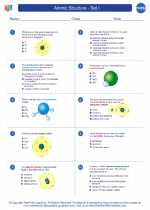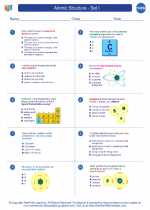Aluminum
Aluminum is a chemical element with the symbol Al and atomic number 13. It is a silvery-white, lightweight metal that is the third most abundant element in the Earth's crust, after oxygen and silicon. It has a high resistance to corrosion and a low density, making it a popular choice for a wide range of applications.
Properties of Aluminum:
- Atomic Number: 13
- Atomic Mass: 26.9815
- Symbol: Al
- Melting Point: 660.32°C
- Boiling Point: 2519°C
- Density: 2.70 g/cm3
- Electron Configuration: [Ne] 3s2 3p1
Uses of Aluminum:
Aluminum is widely used in various industries due to its advantageous properties. Some common uses of aluminum include:
- Transportation (e.g., car bodies, airplane parts)
- Packaging (e.g., aluminum foil, cans)
- Construction (e.g., window frames, siding)
- Electrical transmission lines
- Consumer goods (e.g., utensils, appliances)
Chemical Properties:
Aluminum is a reactive metal and easily forms an oxide layer when exposed to air, which provides corrosion resistance. It reacts with both acids and bases, but is resistant to most forms of corrosion. It also has a high electrical conductivity, making it useful in electrical applications.
Study Tips:
When studying aluminum, it's important to understand its chemical properties, uses, and its position in the periodic table. Here are some study tips:
- Learn the properties of aluminum, including its atomic number, mass, melting point, and density.
- Understand the various uses of aluminum in different industries and its advantages over other materials.
- Study its reactivity with acids and bases, as well as its corrosion resistance.
- Review its electron configuration and its position in the periodic table.
- Practice solving problems related to aluminum's properties and its applications in real-world scenarios.
By understanding these key points about aluminum, you'll be well-prepared to tackle any questions or problems related to this important element.
[Aluminum] Related Worksheets and Study Guides:
.◂Chemistry Worksheets and Study Guides High School. Atomic Structure - Set I

 Worksheet/Answer key
Worksheet/Answer key
 Worksheet/Answer key
Worksheet/Answer key
